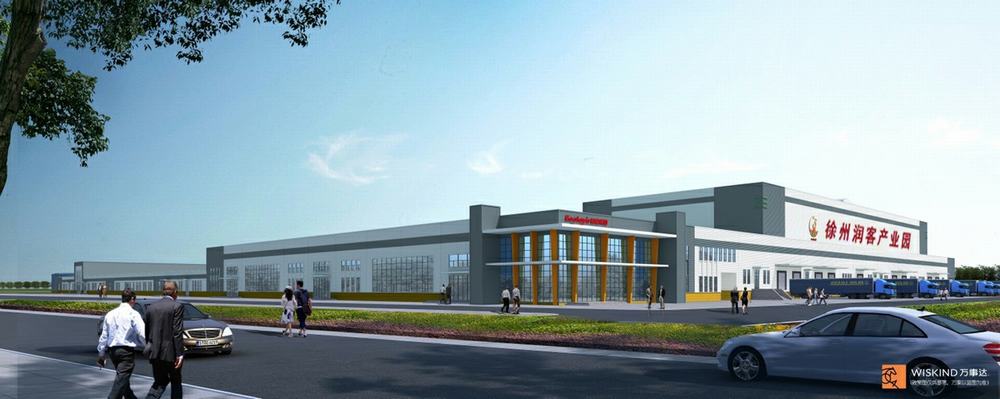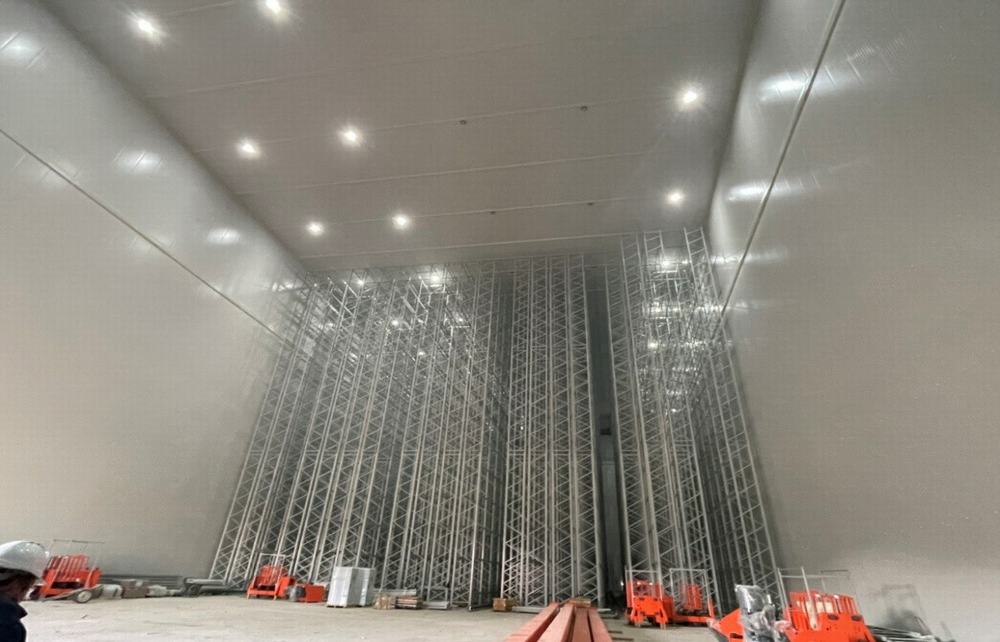Brand: WISBUILD
Product origin: Shandong, China
Delivery time: 30-40 days
Supply capacity: 20000 meters/month
If you are looking for the highest quality steel structure supplier, please contact us and our engineers will provide you with a professional quotation plan.
1 Descriptions of Cold Storage Rooms for Vegetables and Fruits:
| Descriptions | Cold Storage Rooms for Vegetables and Fruits |
| Refrigeration unit | Brand compressor |
| Refrigeration type | Air cooled/water cooled/evaporation cooled |
| Refrigeration | R22,R404a,R447a,R448a,R449a,R507a refrigerant |
| Defrost type | Electric defrosting |
| Voltage | 220V/50HZ,220V/60HZ,380V/50HZ,380V/60HZ,440V/60HZ optional |
| Panel | Polyurethane PU PIR PUR insulation panel,40kg/m3 |
| Panel thickness | 50mm,75mm,100mm,150mm,200mm,250mm,300mm |
| Type of door | Hange door,sliding door,double swing electric sliding door,truck door |
| Temp of room | -20ºC~+8ºC |
| Function | fruit,vegetable,flower,fish,meat,chicken,medicine,chemical,electronics,etc |
| Fittings | All necessary fitting are included optional |
| Place to assemble | indoor/outdoor(concrete construction building/steel construction building) |
2 Details of Cold Storage Rooms for Vegetables and Fruits:


Cold rooms artificially control and maintain temperature for freezing and storage. Temperature isn’t always lower is better; different items require specific ranges. Frozen cold storage widely used in fruit, vegetable, food, fish, meat, cold drinks, ice cream factories. Freezer temperatures generally range from -15°C to -35°C, preserving quality and extending shelf life. Carefully controlling temperature minimizes spoilage, manages inventory, and provides fresh, safe products. Appropriate cold room temperatures determined by stored items’ requirements, enabling effective preservation across various industries.
| Cold Room Panels: | |
| Panels thickness | Temperature inside and outside cold room |
| 75mm | -5~25ºC |
| 100mm | -15~25ºC |
| 150mm | -25~25ºC |
| 180mm | -35~25ºC |
| 200mm | -50~25ºC |
Cold storage rooms find extensive applications across diverse industries, including food, supermarkets, hotels, aquatic products, pharmaceuticals, biologics, chemicals, industrial, and mining enterprises. These temperature-controlled environments offer customizable solutions tailored to customer specifications and unique storage needs. Constantly striving for excellence, cold storage providers possess the capability to satisfy specialized requirements, ensuring customer satisfaction. With meticulous attention to detail and adaptation to individual demands, these cold rooms facilitate effective preservation and storage, catering to the distinct needs of each industry’s products or materials. Delivering optimal temperature regulation and unwavering quality, cold storage solutions empower businesses with reliable and tailored cold chain management.
| Cold room function | Designed temperature range |
| Fresh keeping | 0°C~+ 5°C |
| Quick freezing/blast freezing | -40°C~-35°C |
| Processing area | +2°C~+8°C |
| Pre-cooling room/chilling room | +3°C~+2°C |
3 Cold Storage Rooms for Vegetables and Fruits Installation Sites:

1. Site selection and preparation: Choosing the ideal location with proper access, infrastructure, and environmental conditions.
2. Equipment selection: Determining the appropriate refrigeration system, insulation materials, and monitoring devices based on specific requirements.
3. Construction: Building the cold storage room with proper insulation, ventilation, and access points.
4. Installation of cooling systems: Setting up the refrigeration system, including compressors, evaporators, and condensers, to maintain the desired temperature and humidity.
5. Electrical and control systems: Integrating electrical wirings, control panels, and monitoring devices for efficient operation and temperature regulation.
6. Testing and commissioning: Conducting thorough testing of the cooling system, insulation, and overall functionality to ensure optimal performance.
7. Maintenance and monitoring: Implementing regular maintenance schedules and monitoring procedures to ensure the long-term efficiency and reliability of the cold storage room.
4 Cold Storage Rooms for Vegetables and Fruits Project Cases:


When it comes to implementing cold storage solutions for vegetables and fruits, several project cases stand out. These projects demonstrate the efficacy of cold storage rooms in preserving produce freshness and extending shelf life. From controlled atmosphere storage to refrigeration systems, each case underscores the importance of tailored solutions for different produce types. These implementations prioritize factors such as temperature control, humidity regulation, and ethylene management to ensure optimal storage conditions. Such projects serve as benchmarks for the industry, showcasing the efficiency and reliability of modern cold storage technologies.
5 Cold Storage Rooms for Vegetables and Fruits Q&As:
1. What benefits do cold storage rooms offer for vegetables and fruits?
Cold storage rooms extend shelf life, reduce food waste, preserve quality, and enable year-round availability by controlling temperature and humidity.
2. What key factors should be considered when designing a cold storage room?
Storage capacity, temperature and humidity control, insulation and energy efficiency, ventilation and air circulation, and material selection are crucial factors.
3. What are the best practices for operating and maintaining a cold storage room?
Regular temperature and humidity monitoring, sanitation and pest control, FIFO inventory management, and regular equipment maintenance are essential practices.
4. What common challenges are faced in operating cold storage rooms?
Maintaining optimal temperature and humidity, ensuring food safety, reducing energy consumption, and regular equipment maintenance are common challenges.
5. What emerging technologies are being used in cold storage for vegetables and fruits?
Remote monitoring and control systems, automated inventory management systems, and energy-efficient technologies are emerging technologies in cold storage.











